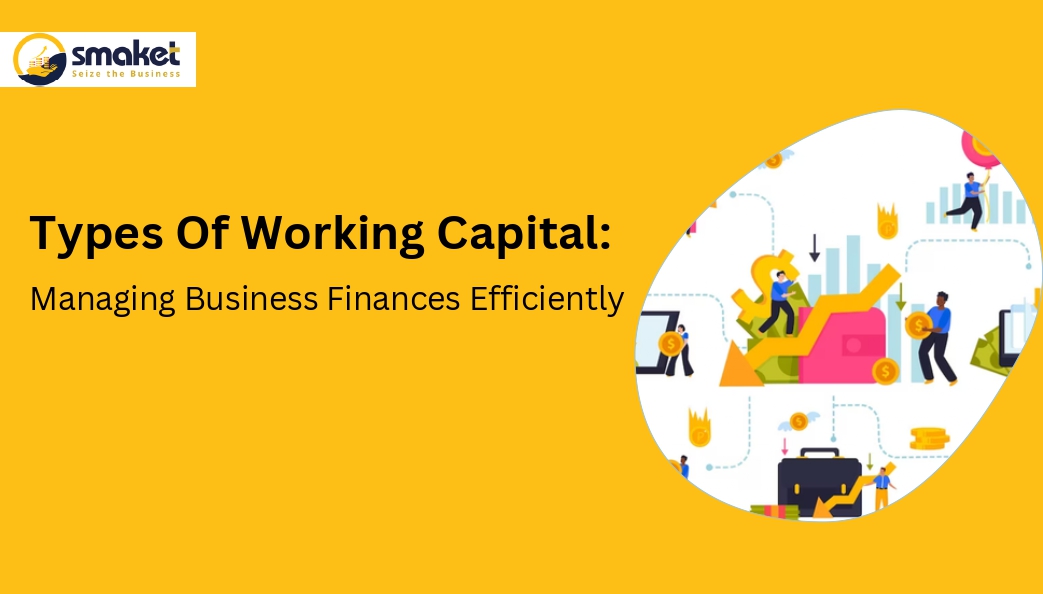Regardless of the size or sector of the organization, working cash is an essential component. It guarantees efficient operations and aids in meeting both anticipated and unanticipated demands. Working capital is categorized into many forms in order to be managed successfully. The many types of working capital and their importance in preserving a sound financial structure will be discussed in this blog.
What is Working Capital?
The difference between a company’s current assets and current liabilities is its working capital, commonly referred to as net working capital. Cash, accounts receivable, and inventory are examples of current assets; accounts payable, wages, and taxes are examples of current liabilities. We can determine a company’s Financial Health and capacity to carry out daily operations by evaluating its working capital.
Types of Working Capital:
Permanent working capital:
The bare minimum of capital needed to keep a firm operating efficiently is referred to as permanent working capital. The fixed share of working capital that is invested in current assets is known as this. For instance, a crucial component of fixed working capital is maintaining a minimum supply of raw materials. The size of the firm and its anticipated growth are used to estimate the amount of permanent working capital. Regular working capital and reserve margin working capital are two more divisions that might be made.
Regular Working Capital:
The capital required for everyday activities, such as daily salaries and payments, is covered by regular working capital.
Reserve Margin Working Capital:
This kind of working capital acts as a safety net for unforeseen circumstances that could occur outside of normal business operations. During situations like strikes or natural disasters, it serves as a buffer.
Variable Working Capital:
Variable working capital is capital invested in a firm for a short period of time. It varies according to changes in firm assets and size. This category includes seasonal variable working capital and exceptional variable working capital
Seasonal Variable Working Capital:
Seasonal variable working capital is required by businesses that encounter seasonal need for money, such as those that rely on raw material supply or the Christmas season. It is designed particularly for the changing demands of seasonal enterprises.
Special Variable Working Capital:
Unexpected costs or occurrences that happen as a result of the company’s existing circumstances are covered by special variable working capital. It enables firms to set aside a specific amount for unanticipated costs such as marketing campaigns or unique events.
Gross Working Capital:
Gross working capital is the entire amount of money invested in current assets, which includes cash, accounts receivable, inventories, marketable securities, and short-term investments. , on the other hand, does not offer a clear picture of a company’s short-term financial health or operational effectiveness. against evaluate operational efficiency, current assets must be compared against current liabilities.
Net Working Capital:
The difference between a company’s current assets and current liabilities is its net working capital. It reveals information on operating efficiency, liquidity, and short-term financial capability. A positive net working capital suggests that a company is satisfying its current liabilities and is hence creditworthy.
Factors Influencing Working Capital:
A company’s working capital requirements are determined by a number of things. The type and scale of the firm, the business cycle, the production cycle, operational efficiency, sales volume, financial requirements, and seasonal swings are all examples. Understanding these characteristics allows organizations to manage their working capital more successfully.
Arranging Working Capital:
Businesses can arrange working capital in a variety of ways. These include invoice financing, commercial loans, trade credit, and also credit lines. The best financing solution for a firm is determined by its unique demands and circumstances.
Increasing Working Capital:
Companies can grow their working capital through increasing revenue, selling long-term assets, and issuing preferred shares. These strategies pump more capital into the company, increasing its financial capabilities.
The Working Capital Cycle:
The working capital cycle measures how snappily a company’s current means may be converted into cash or coequals. It’s a critical metric for managing cash inflow and boosting functional effectiveness, particularly for small and medium- sized enterprises.
Conclusion:
The fiscal stability and functional effectiveness of a pot depend heavily on working capital. By understanding the numerous types of working capital and its significance, businesses may successfully manage their finances and maintain effective operations. To meet the specific requirements of the company, working capital aspects should be precisely assessed and suitable backing options should be looked into. enforcing strategies to increase working capital might ameliorate a business’s fiscal standing indeed further. Eventually, covering the working capital cycle enables businesses to manage cash inflow and boost functional effectiveness, both of which lead to sustained profitability.

